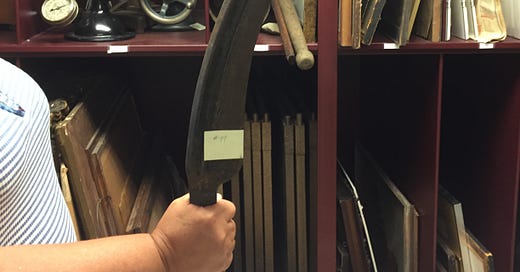Books and Papermaking
I have paper in my blood. Or at least that's what my father used to say. He grew up in the industry. In the 1930's, after high school, he did odd jobs at various companies in Holyoke, Massachusetts. Nicknamed Paper City, a multitude of factories produced enormous amounts of paper there in the late 1800's to mid 20th c. Eventually my dad was promoted to the position of sales rep. At the last company he worked for, Judd Paper, he moved from sales to management to—here comes a twist. The former owner's heir, Mr. Judd's son-in-law, dropped dead before he could take the company's reins.
Mr. Judd, ready to retire, was quite fond of my father and an arrangement was made for my dad to buy the company. Dad sold fine stationery, a true commodity in its day. I knew, as a child, to look for a watermark on a sheet, proof of high quality. Watermarks date back to at least the 13th c. and are used to evaluate the heft of the weave, connect the image or logo to a specific paper company, or reveal an intricate artistic rendering that can only be seen by holding the page to light.
Dad traveled all the time and brought home treats like cheese bread from the famous Schrafft's in New York City. Renown for a scene in Breakfast at Tiffany's, the restaurant was also celebrated in our home. My three brothers and I loved a slice of fresh toasted cheese bread with butter on it! (It had a weird orange color though which I question now). A loaf never lasted long.
What does any of this have to do with my writing? Let's regroup. I wrote a particular scene at the beginning of Under Her Skin. Gin and Nellie are at a paper factory in Holyoke, the city next door to South Hadley where Mount Holyoke is located. My research led me to the archives at Wistariahurst, a museum in Paper City. Since my father is no longer living, I wanted to learn as much as I could about what my characters might encounter in the bustling factory, in the dead of night. One of the items in the archives is the "weapon" in the photo above. It was used to cut up rags which were then turned into paper. It's a safe bet that the Occupational Safety and Health Administration (OSHA) had not been established yet.
The tables and stations inside paper factories came to me through photographs, ephemera, and documents in the museum archives. Books with samples of paper, a vague memory as something that sat on tables in my childhood home, were there to touch and consider.
It was also a time of burgeoning mass media. And I mean printed mass media. By the late 1800's, magazines like National Geographic, Vogue, and Life started publication. Time Magazine and Reader's Digest came along in the 1920's, among others. Paper of all kinds was in mass production.
Interested in making your own custom paper? This woman will teach you how to do it in simple steps. Of course the big factories of yore used chemicals and polluted the rivers and streams where the Algonquins and Iroquois once fished. Now, the industrial area in Holyoke has clean water in the canals, a fish lift for salmon with eagles soaring overhead, and converted factories turned into condos, boutiques, and event venues. Judd Paper's original building is now an arts complex.
Back to my writing. In another chapter of Under Her Skin, Gin and her BFF Monique lunch at Schrafft's. They have a lamb chop with mint jelly on the side. The price, in reality, was somewhere around $1.90 each. The restaurant was a big deal in the early to late 20th c. though it eventually closed. However, there is big news when it comes to Schrafft's. They are reopening with a reworked menu and an upscale menu.
We know books of some sort have existed since the beginning of time. First papyrus and parchment, then paper. Of course the printing press and the industrial revolution of the late 1800's helped. To that, a paper mill is part of the fictional town of Twin Bridges, in my second book, Kissed by a Midwife. In a poignant scene, Marigold burns a letter out of spite and the flame licked the heart of it until its vellum twisted into brown char. Books and paper are still in my blood, and they definitely have a place in my writing. I think Dad would be happy about that.




